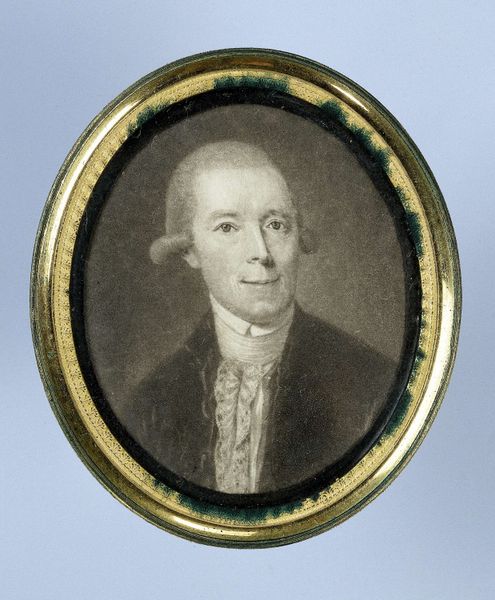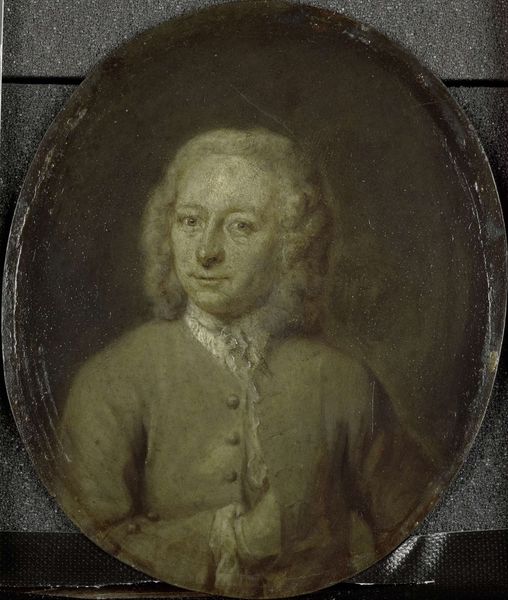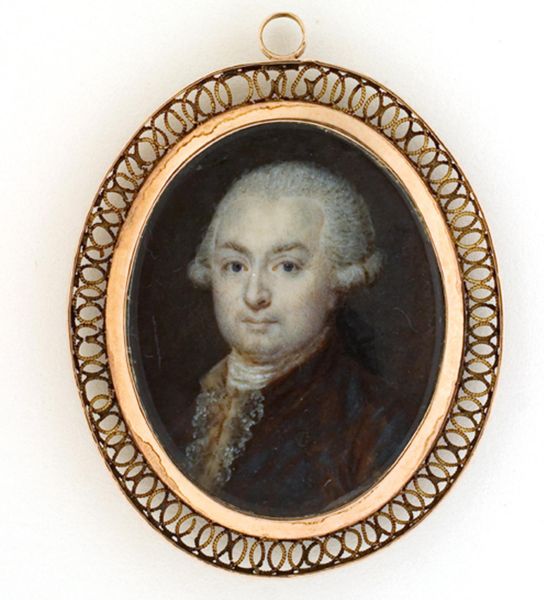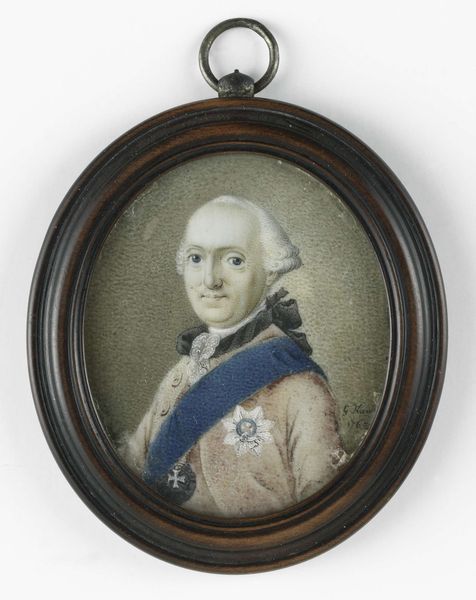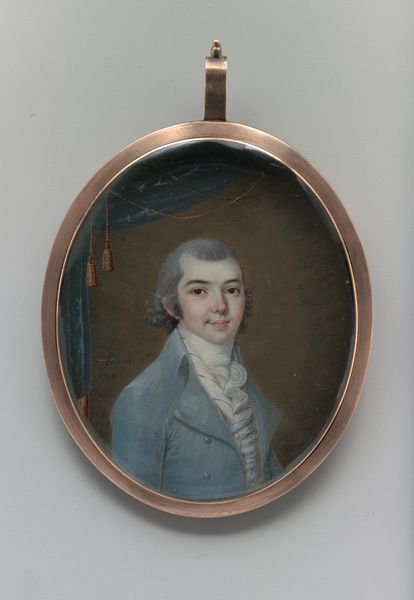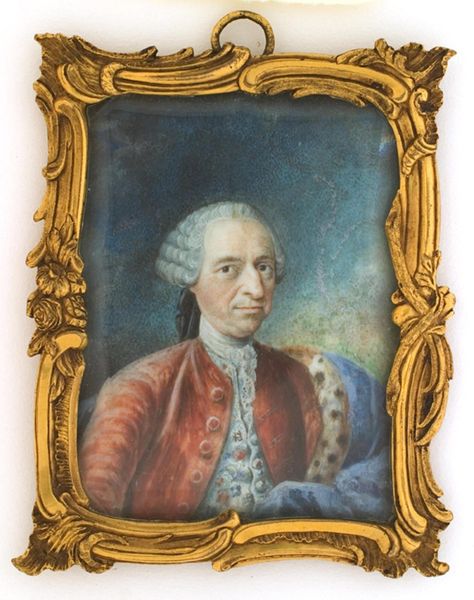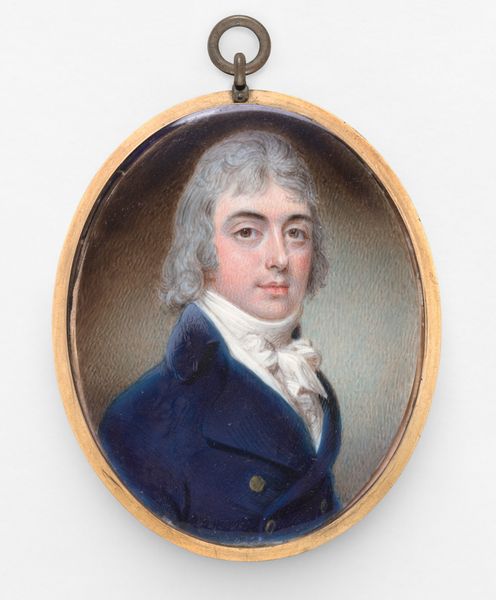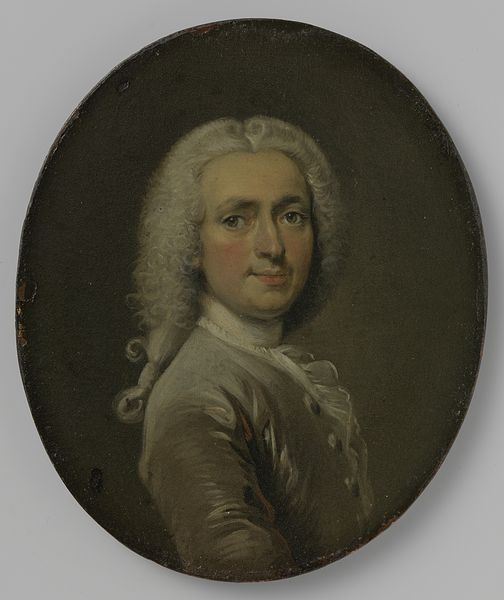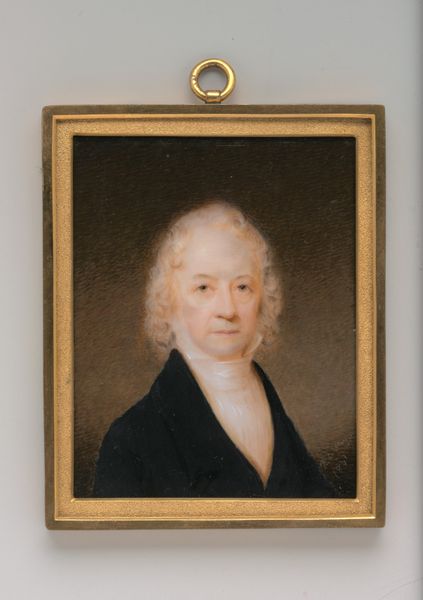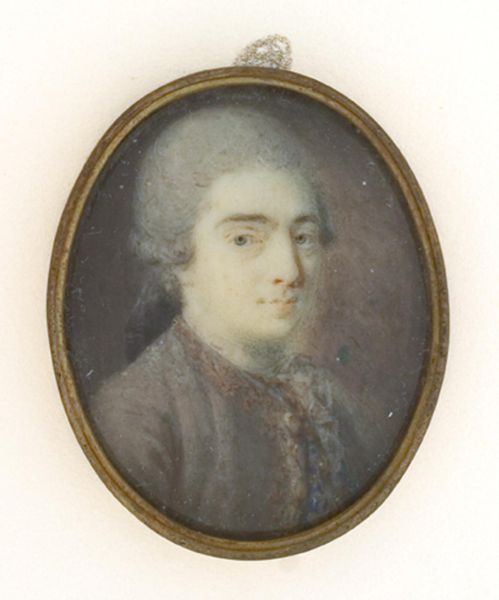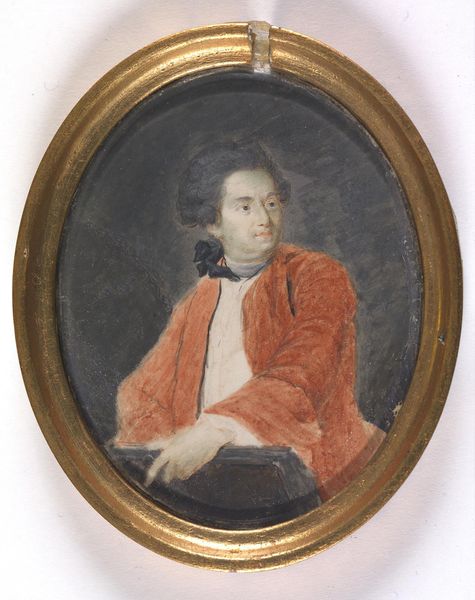
Dimensions: Oval, 2 x 1 3/8 in. (51 x 36 mm)
Copyright: Public Domain
Curator: Here we have a miniature portrait, likely dating from around 1775 to 1785. The work, attributed to an anonymous artist, is subtly titled, "A Man with the Initials RH". Editor: The delicacy is striking! The pale complexion and the sky blue wash in the background, create a rather melancholic atmosphere. It’s quite beautiful, especially contrasted against the heavy frame. Curator: Indeed. Watercolor was carefully applied. The materiality speaks to the function these objects played, not only as personal keepsakes, but potent symbols of wealth. Think about the skill required, the quality of the materials, even the labor to craft that decorative frame. It’s all intertwined with systems of power and patronage. Editor: Focusing on the portrait itself, observe how the artist masterfully captures the texture of the subject’s clothing with minimal brushstrokes. Notice also the symmetry—the oval frame echoes the shape of the man's face, drawing the eye directly to his calm, perhaps faintly inquisitive gaze. The details on the jacket seem muted against his brighter face. Curator: Right, and it is tempting to speculate on who this "RH" was. Was it commissioned by a loved one? Was the artist following convention? Such miniatures were important economic objects circulating amongst elite networks. These material connections shaped identities and maintained social cohesion through gifts, commissions, or even inheritance. The tiny size facilitated discreet exchange. Editor: Certainly. It prompts a question, why render it so small, and so detailed? How does that intimacy play against our experience as an art consumer today? In that way it reflects a universal need to be seen, rendered, and remembered. Curator: Looking beyond the sitter's psychology, the object opens up broader considerations of artistic production. Rococo might indicate more than artistic inspiration; the man and his clothing can denote social networks that shaped consumption and manufacturing, even on a miniature scale. Editor: I see it. Perhaps this viewing experience reveals to the viewer, what was originally intended as hidden social stratification. The level of preservation itself shows that continued commitment to material value that might’ve served many purposes across generations. Curator: Precisely, viewing artworks through combined lenses offers richer narratives of history, power and human desire, from artistry to material contexts. Editor: Indeed, understanding that it once traveled between people is key to understanding what we see today.
Comments
No comments
Be the first to comment and join the conversation on the ultimate creative platform.

